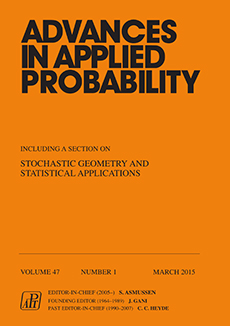Abstract
The signature of a coherent system is a useful tool in the study and comparison of lifetimes of engineered systems. In order to compare two systems of different sizes with respect to their signatures, the smaller system needs to be represented by an equivalent system of the same size as the larger system. In the paper we show how to construct equivalent systems by adding irrelevant components to the smaller system. This leads to simpler proofs of some current key results, and throws new light on the interpretation of mixed systems. We also present a sufficient condition for equivalence of systems of different sizes when restricting to coherent systems. In cases where for a given system there is no equivalent system of smaller size, we characterize the class of lower-sized systems with a signature vector which stochastically dominates the signature of the larger system. This setup is applied to an optimization problem in reliability economics.
Citation
Bo H. Lindqvist. Francisco J. Samaniego. Arne B. Huseby. "On the equivalence of systems of different sizes, with applications to system comparisons." Adv. in Appl. Probab. 48 (2) 332 - 348, June 2016.
Information





